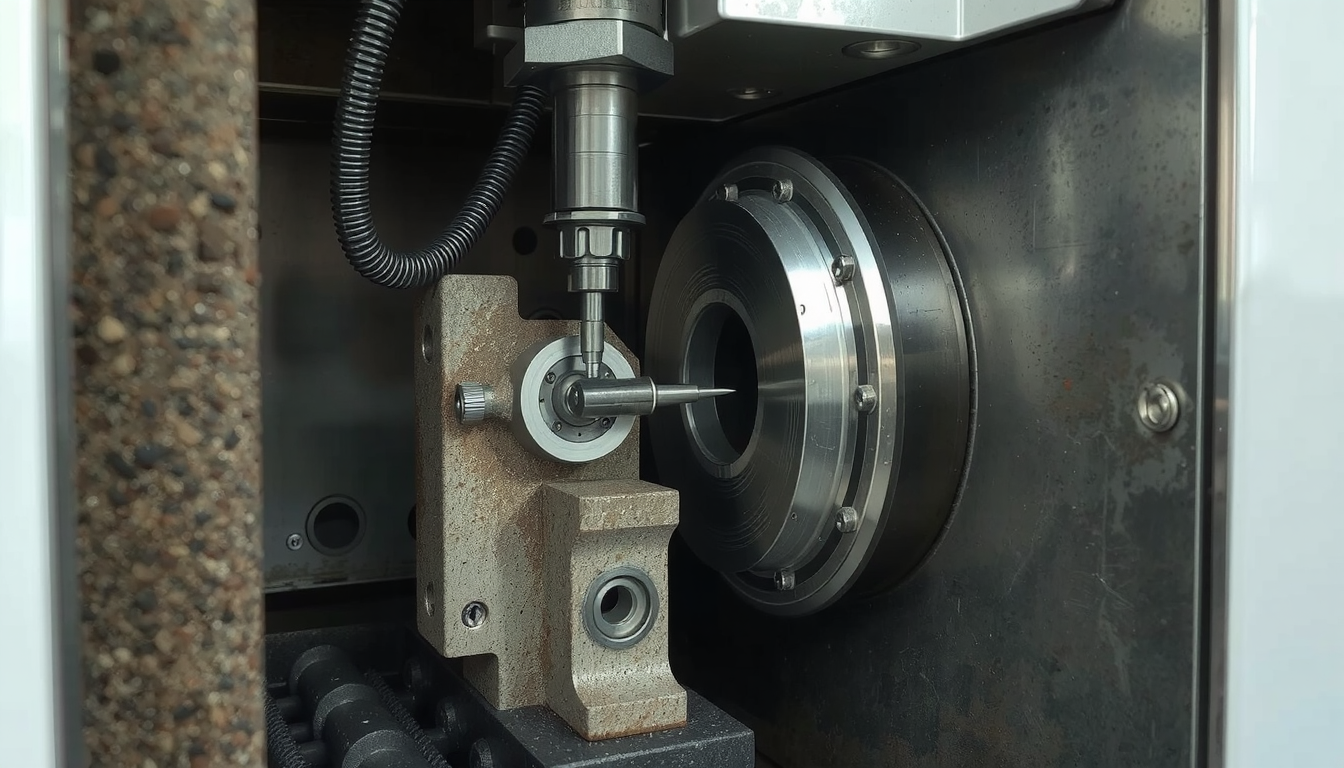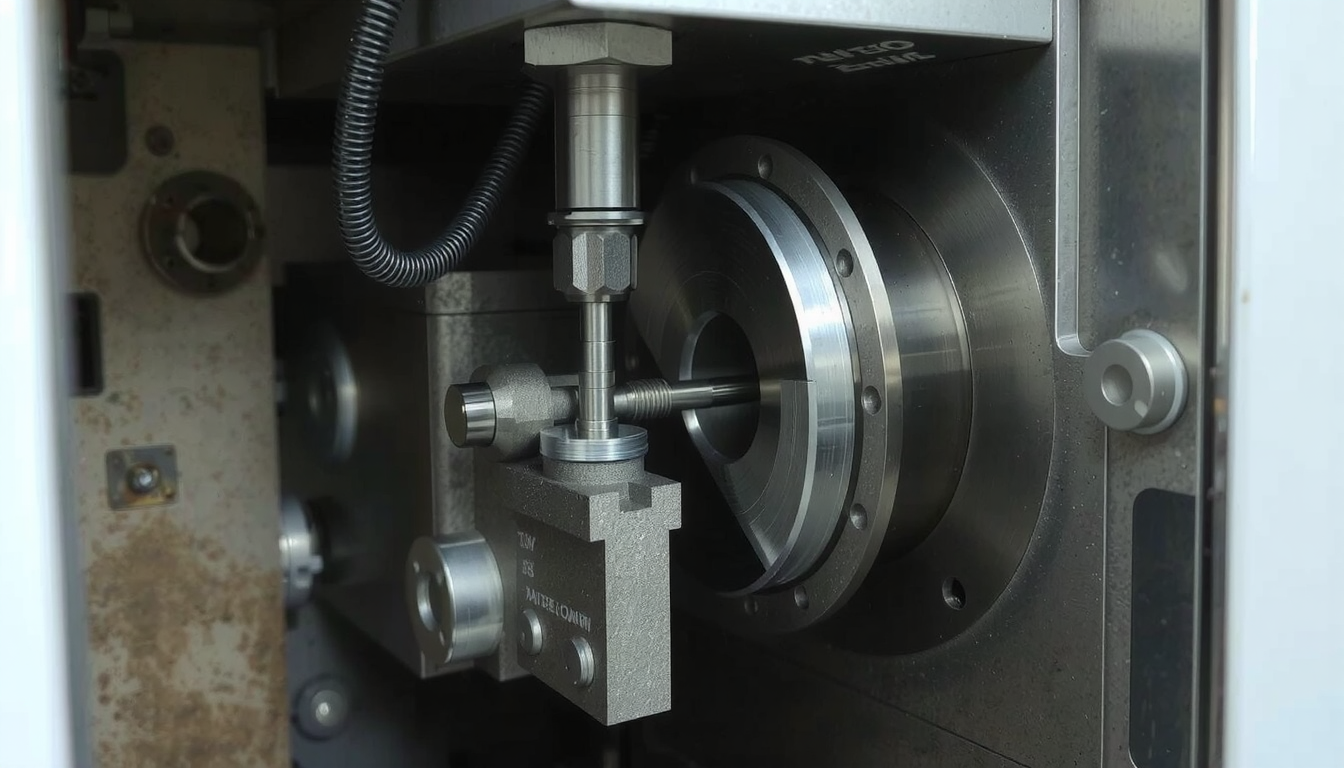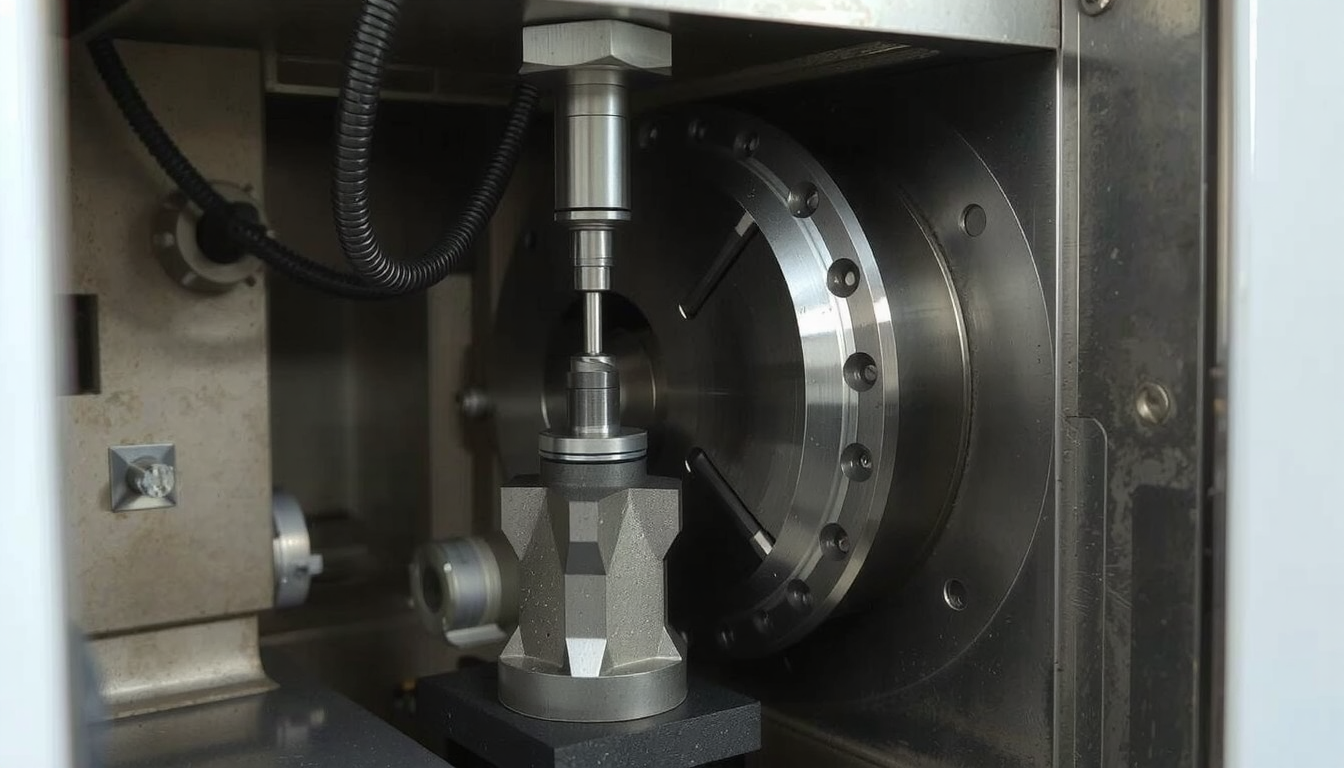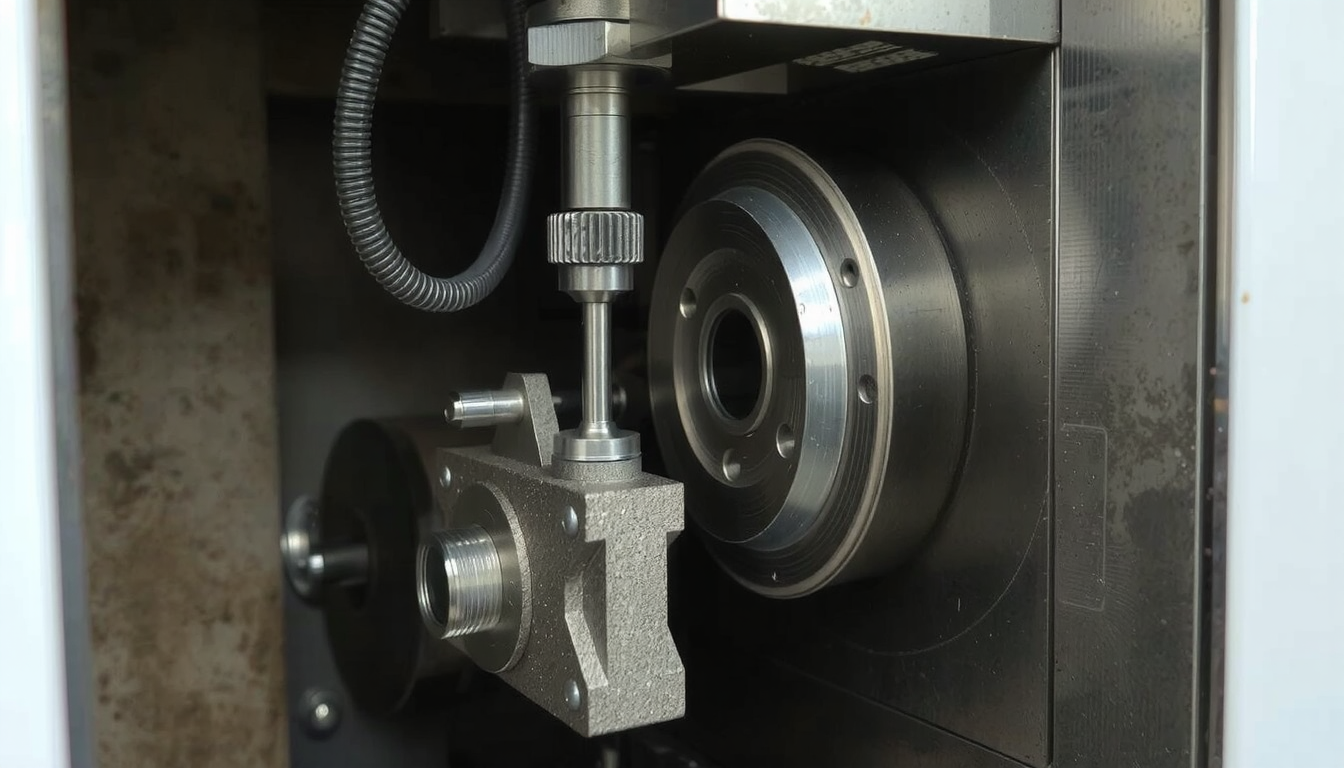The Critical Role of Tool Offsets in CNC Turning

A tool offset is a number. It tells the CNC machine where a tool’s cutting tip is located. Think of it like coordinates for each tool in the turret. Without this data, the machine doesn’t know where the tool is.
Learning how to set tool offset on a CNC lathe is vital for making accurate parts. It lets the machine use many different tools in one program. Good offsets stop the tool from crashing into the part or machine.
People often mistake the tool offsets with work offsets (G54, G55, etc.). A tool offset shows where the tool is. A work offset shows where the part is. You need both for the machine to work properly.
Why Precision Here Is Everything
Correctly setting the tool offsets is crucial since they will produce parts that are to specs and have a nice finish. The tiniest error in an offset can result in the part being too big or too small. In that case, the part becomes scrap.
To get the professional look, every step counts. This fundamental idea is essential for delivering quality Servicios de torneado CNC. Getting the offsets right from the start saves time and material.
Moreover, good offsets will also help you save on tools. A wrong offset might make a tool cut deeper than it should, which eventually wears the tool more than normal, or even breaks it. Furthermore, it is possible to damage the machine severely.
Before You Start: Required Prep Work and Safety Guidelines
To get started, you have to do some preparations first. A well-ordered arrangement is both safe and helps productivity. This way, you can avoid mistakes and accidents.
Taking a few minutes to prepare makes setting tool offsets smoother and more reliable.
Safety First Checklist

- Ensure that the machine is on manual mode such as [JOG] o [HANDLE]. Never set offsets in any [AUTO] mode.
- Know the location of the emergency stop button. Make sure you can reach it quickly.
- Always put on your protective gear. The most significant one is the safety glasses.
- Find the rapid override knob. When moving the tool to the part for the first time, turn it down to 25% or 50%. This will allow more control and help prevent crashes.
Tools and Materials You Will Require
- A piece of good stock material to cut. It helps if you know its rough size and also it should be clean.
- A good micrometer or calipers to measure the part. A micrometer is more accurate.
- A clean rag to wipe the part and tools.
- Optional: A piece of paper or thin shim for feeling the touch-off on careful jobs.
Getting the Basic Concepts Straight: Tool Geometry vs. Wear Offsets
When you glance at the offset page on your control, you will see columns for “Geometry” and “Wear.” These two values collaborate. Understanding the difference is key to becoming a skilled operator.
A simple way to think about it is setting your watch. The first time you set the hour and minute is the Geometry. If it runs a little fast or slow over a week, the small fix you make is the Wear.
Tool Geometry Offset
The Geometry offset is the principal measure. It is the distance from a fixed machine point (like the center of the turret) to the tip of the cutting tool. This value informs the machine of the basic size and position of the tool.
You set this large number once when you first set up the tool. Every tool has a different length and position, so the machine must adjust for this. This is often done by using a Tool Length Offset (TLO). The geometry value is that main fix.
Tool Wear Offset
The Wear offset is meant for the very little adjustments that are done during a production run. As a tool cuts the metal, its edge slowly wears away. This may cause the parts to be just a little bit bigger or smaller after some time.

But, instead of measuring the whole tool again, you just put a little value (like +.002″ or -.001″) to the Wear column. This changes the position of the tool for the parts to be correct. It is a fine-tuning modification.
How to Set Tool Offsets: 3 Popular Choices Explained
The machine can learn from the various ways your tools are. The choice of method depends on the device you have which is available, and which you prefer. This article covers the three most common methods about how to set tool offset on a CNC lathe.
Method 1: Manual Touch-Off (The Classic Way)
This is the most straightforward technique, and it works on all CNC lathes. Your touch will depend on your talent as an operator to just touch the tool to the part and write in the position you feel at that moment. You can feel and hear when the tool makes a light cut.
- Select the Tool: En [MDI] mode, type (for tool 1, offset 1) and press cycle start. This will bring the correct tool into the cutting position.
- Set the Z-Axis Offset:
- Start the spindle at medium speed (e.g., 500-1000 RPM).
- Using the handwheel or jog buttons, carefully move the tool closer to the front face of the part.
- Take a very light cut across the face. This creates a clean, flat surface that will be your Z-zero reference.
- Without changing the Z-axis, move the X-axis away from the center of the part. Stop the spindle.
- Go to the [OFFSET] page on your control. Use the arrows to find the line for your tool (e.g., Tool 1).
- Move the cursor to the Z Geometry column. On many controls, you will press a button like [Z FACE MEASURE].
- The control will ask for the Z position. Type and press [ENTER]. The machine knows now that this physical location is the program’s Z-zero.
- Set the X-Axis Offset:
- Start the spindle once again.
- Carefully jog the tool to make a light cut along the diameter of the part. Cut it for a length of about an inch.
- Without moving the X-axis, move the Z-axis away from the part, clear of the end.
- Stop the spindle. Use a micrometer to carefully measure the exact diameter you just cut.
- Go back to the [OFFSET] page and highlight the X Geometry column for your tool.
- Press the [X DIAMETER MEASURE] button. The control will ask for the diameter.
- Enter the exact diameter you measured (e.g., ). Press [ENTER]. The machine now can calculate the tool’s position related to the spindle centerline (X0).
- Repeat for All Other Tools: You will have to do this for every tool you intend to use in your program. The control’s functions buttons allow you to set the offset values fast once you get the hang of it.
Method 2: Using an Automatic Tool Presetter (The Fastest Way)
Many modern CNC lathes carry a tool presetter. This is a small arm with a sensor on it that moves in and out. This fully automates the process of setting tool offsets. Thus, it is quicker, it is often more reliable, and it is sort of a freebie.

- Call the tool which needs to be set (e.g., in MDI).
- Switch the tool presetter on. This is typically done through the control panel. The arm will move into the right position.
- Jog the tool manually, so that it is almost touching, but not making contact with the sensor.
- Begin the automatic measurement cycle. The machine will move the tool until it touches both the X and Z sensor.
- The control will measure the location automatically and input the appropriate numbers in the tool’s geometry offset page. It’s a quick way to Get your CNC lathe tool offsets configured quicker with Haas Automation’s Automatic Tool Presetter.
Method 3: The Master Tool Method
This is an excellent method for quickly setting a bunch of tools all at once. It is helpful when you have one main turning tool and a few supplementary tools like drills or groovers.
- Set Up a Master Tool: Pick one tool, usually Tool 1, as your master tool. Set its X and Z offsets perfectly using the manual touch-off method described above.
- Set the Work Offset (G54): With the master tool active, touch the tip to the face of your part. Go to your Work Offset page (e.g., G54) and set the Z value there. Now, the machine knows where the front of the part is.
- Set Other Tools’ Z-Axis: Move to your next tool (e.g., Tool 2). Carefully jog it until it touches the exact same face of the part. Look at the machine’s “Position” screen for the Z value. This number is the Z geometry offset for Tool 2. Enter it directly into the Z Geometry column for Tool 2.
- Set Other Tools’ X-Axis: The X-axis can be set in a similar way. Use the diameter cut by the master tool as a reference for all other turning tools.
Pro-Tips and Best Practices for Setting Offsets
Getting the numbers into the machine is only part of the job. Being like a professional means being consistent and precise. These tips will help you improve your process for setting tool offsets.
Tips for Good Offsetting
- Always Use a Skim Cut: Never touch off a tool on a rough, scaly, or uneven surface. Take a light “skim cut” first to create a perfectly true surface to measure from. This is the single most important tip for accuracy.
- Check Your Tool Tip Radius: For high-precision work, you must provide the control with the radius of the tool’s cutting tip (the “R” value on the offset page). You also need to set the tool’s “Type” or orientation (“T” value). The control uses this information to correctly calculate the cutter compensation.
- “Measure Twice, Cut Once”: This old saying is still true. Double-check the number on your micrometer before you type it in. A simple mistake like typing instead of will ruin your part.
- Warm-Up the Machine: To achieve maximum precision, allow the spindle and axes run for 15-20 minutes before they are fitted with critical finishing tools. As it heats up, the machine may grow by a few ten thousands of an inch. Stable tools on a warm machine will give more consistent results.
- Be Consistent: Whatever method you use, apply it the same way for every tool in the job. This reduces small errors between tools and ensures they all work together correctly.
Conclusion: Precision Setup is the Foundation of Quality Machining
Learning how to set tool offset on a CNC lathe is much more than just doing something. It is a core skill. It is the keystone upon which all accurate and efficient turning operations are built. Without it, even the highest quality programs will fail.
Go slowly. Be patient and focus on doing it consistently. With practice, these methods will become natural to you. Achieving this precise setup is what sets a true machinist apart from a button-pusher. To learn more about advanced manufacturing and machining solutions, visit Mekalite.
FAQ: Top Queries About CNC Lathe Tool Offsets Answered
1. What’s the distinction between a tool offset and a work offset (G54)?
A tool offset measure the size and position of a particular tool in relation to the machine, while a work offset tells the machine where the raw material is located (like G54 or G55). These are working together. The work offset sets the zero point for the program. The tool offsets allow each tool to move from that zero point accurately.
2. Do I have to reset tool offsets for every new job?
Not necessarily all the time. If the same qualified tools and holders are used, their geometry offsets can remain the same from job to job. However, with every new setup a new work offset (Part Zero) will have to be set. You only need to re-measure a tool’s offset if you change the insert, notice any damage, or see that your parts are out of size.
3. What does “touching off” a tool mean?
“Touching off” is where jogging a tool carefully getting in light contact with a known surface, can be the part, a tool probe, or a gauge block. That physical touch is the way you tell the machine just exactly where the tool cutting edge is.
4. Why is my part oversized or undersized after setting offsets?
This is a common issue, so let me check with a few possibilities. First, did you enter the diameter instead of radius if the machine expected it? Have you mistakenly set the values too high?
5. Can I set the offset for a drill or boring bar the same way?
Partially. The Z-axis is set the same way by touching the tool’s tip to the face of the part. However, you cannot set the X-axis by taking a cut, since these tools work on the centerline. Instead, you jog the tool by eye or with a dial indicator until it is perfectly aligned with the spindle’s center. Once it is centered, you go to the offset page and set its X Geometry value to .

